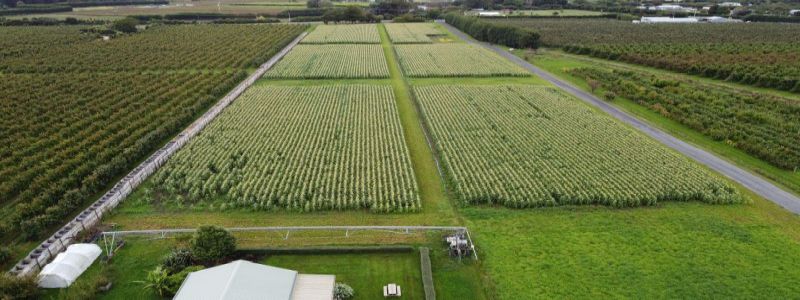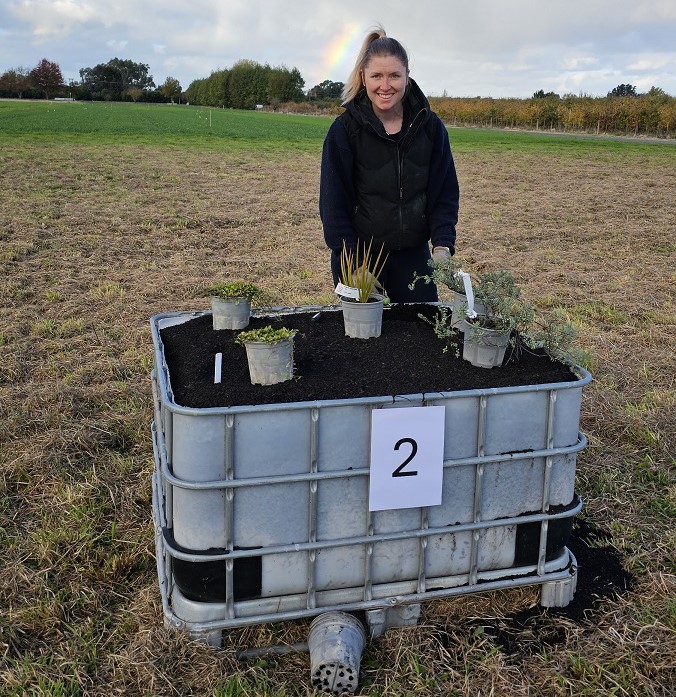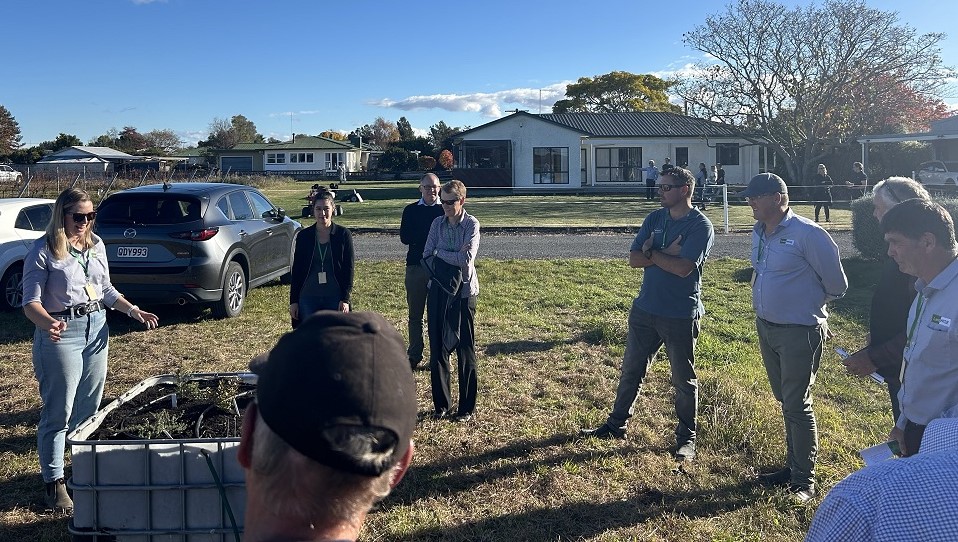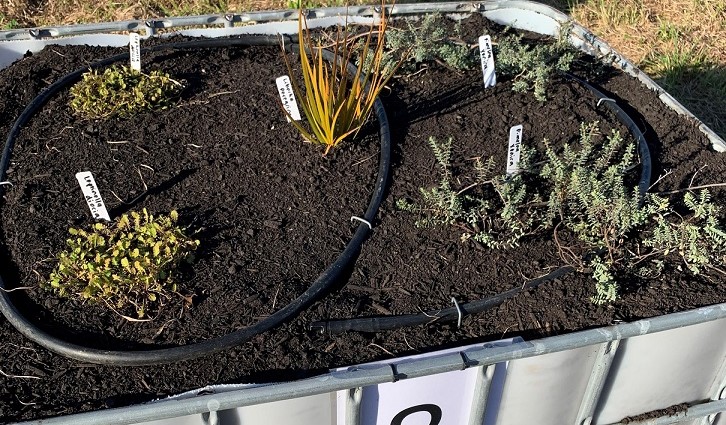Knowledge and resources from the A Lighter Touch biodiversity project are being adopted by a regenerative agriculture project in Hawke’s Bay, further extending the project’s learnings.
Just a month after hearing about the moveable pods of biodiverse planting that are one component of the ALT project, LandWISE Sustainable Systems Project Manager Alex Dickson had four planted out for use at their demonstration site near Hastings.
LandWISE has a project underway as part of the Sustainable Food and Fibre Futures fund for Regenerative Agriculture. They have completed two years of a six-year project focusing on intensive process vegetable production, comparing conventional growing systems with regenerative practices and a hybrid of the two.

A drone view of the LandWISE demonstration site near Hastings. Credit: LandWISE.
Alex first heard about the ALT-Vegetables NZ-Onions NZ biodiversity project at the Vegetables Research Roadshow hosted by Vegetables New Zealand in Havelock North in April. She picked up a copy of the plant species resource that detailed the species used in the biodiversity project and later watched the video presentation about the project which is available on the ALT website.
“We could see this was something we could implement on our research trial site quite easily. Particularly the fact that they’re moveable is great, because it means we can locate them within different treatments we are trialing as part of our work or leave them around the outside of the plots.”
With support and advice from Olivia Prouse, who has led the biodiversity project at the Pukekohe demonstration farm, Alex has planted out four pods this autumn, and is planning to establish another four pods in the spring, using natives that are indigenous or endemic to Hawke’s Bay.
“We sourced 75% of our plants from a local nursery, Plant Hawke’s Bay, which has an eco-sourcing philosophy, so they harvest and grow from seeds from the local area. One species I’m really excited about is a little native daphne called Pimelea mimosa (Pinātoro), it’s a flowering plant that is endemic to Te Mata Peak, so it’s quite special for our region. We are also excited about plants like Creeping Pohuehue (Muehlenbekia axillaris) which provide habitat and food for native Copper Butterflies (pepe para riki).”
The plants selected are hardy species that will tolerate the temperature extremes of frosts in winter, and dry summers. Over the winter and into spring, Alex will be monitoring which plants are flowering, as the plants selected have been chosen to produce a food resource for beneficial insects such as very small parasitic wasps.

Alex Dickson, of LandWISE, with one of the four pods they have established.
“Obviously there’s a little bit of trial and error, with Hawke’s Bay being quite a different climate to Pukekohe. Olivia did some research for us and recommended a mix of plants that she thought would produce the flowering we’re looking for over winter and through into spring. We’ll monitor how that goes and if it’s not quite meeting the mark, we can adjust the plant selection.”
Alex says the LandWISE project is at stage one of establishing the biodiversity aspects of their project.
“We’ve got an irrigator line we can plant under, and based on what we’ve learned from the A Lighter Touch project, we are looking at annual species like alyssum, calendula and marigold, those lower growing flowering species that won’t interfere with our guide arms. Otherwise, that strip gets pretty weedy, so we’re better to have something planted there that has a function and will serve a purpose over the life of our summer crops.”
The LandWISE team is contemplating planting out other non-productive areas such as fence lines with more permanent planting, another component of the ALT biodiversity project.
“The tools that A Lighter Touch has provided have really spurred us on to look at some more creative options and to look at where we can increase plant diversity and insect diversity – because even on our smaller scale trial site, we have small areas that don’t actually do anything except grow weeds. And maybe some of our weeds are actually beneficial and we should call them non-crop plants.”
Alex has also been impressed with the cost effectiveness of the pods as a means of increasing biodiversity. The pods, which had been used to store liquid fertiliser, were free from a local grower who was just going to recycle them. Most of the plants cost less than $10 each, with five in each pod, and the main other cost was the growing medium.
At the recent LandWISE conference, the pods were part of a field visit. “There were a lot of questions. Everyone was interested in it as a novel idea to start increasing biodiversity without having to put aside large areas for plantings.”

Pods discussion at the LandWISE conference field day.
The LandWISE team is hopeful that more pods will be set up by local growers and other on farm native planting options explored, to create biodiversity corridors and provide SNAP for beneficial insects across the region.
LandWISE is one of a number of groups the A Lighter Touch biodiversity project team is connecting with around the country to help extend the knowledge gained through the project with growers in other regions.
